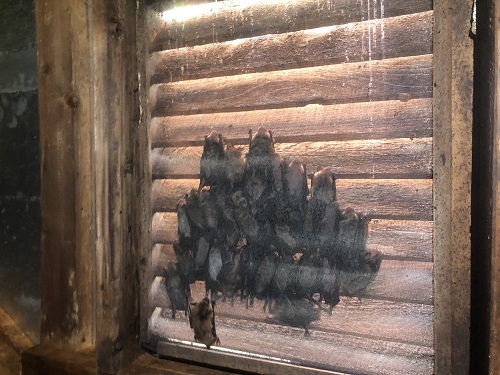Raccoons During Summer
June 29, 2018Three Big Reasons for Mosquito Control on Your Commercial Property
August 13, 2018Does the pitter patter of little wings and feet in your attic have you going batty? The presence of these unique flying mammals can be frustrating. Luckily, there are some good ways to deal with bats in your attic that don’t require killing them or separating parents from babies. Read on to discover our tips!
What kind of bats live in Georgia?
Georgia is an excellent place to find a wide number and variety of bat species. There are 16 known species of bat in the state, according to Georgia Department of Natural resources. Of these, eight are listed as endangered, threatened, or a species of concern. The two most common that are found in homes, attics, barns, and garages are the big brown bat (Eptesicus fuscus) and the little brown bat (Myotis lucifugus). Of these, the little brown bat or little brown myotis is listed as a species of concern due to its declining population.
How do bats get into houses?
Bats are excellent fliers. If there is a crack in your home facing any direction, these fuzzy fliers will find a way in. In fact, they can get in through a gap as small as 3/8 of an inch. Common places where bats can enter your home include:
- Gaps in siding
- Tiles and shingles that are loose or missing
- Crumbling mortar on brick
- Missing knot holes
- Rusted vents
- Chimneys
- Windows with loose frames or missing screens
Are there different solutions for different times of the year?
The short answer to this is yes. Bats have different kinds of behavior at different times of the year. If you have bats that have young inside your house and you seal the holes and trap the babies inside, frantic parents can do damage to the house to try and get back in and this can further risk the welfare of declining bat populations. This is why it is best to avoid breeding and rearing times of year when it comes to eliminating bats from the home.
What do professional wildlife removal companies do about bats?
Wildlife removal companies use a few different techniques to get rid of bats humanely, safely, and effectively. First, they identify the places where bats are entering the home as well as additional alternate entrances they could use. When it comes time to remove them, they will seal most of the entrances and exits. They will place excluder devices on the remaining gaps, allowing bats to leave but not to return. When they are certain all bats are effectively removed, they will seal these last locations. After the bat removal process, their final step is to look at where the bat colony was staying and to clean and repair any damage caused by the colony.
Call us today to learn more!


